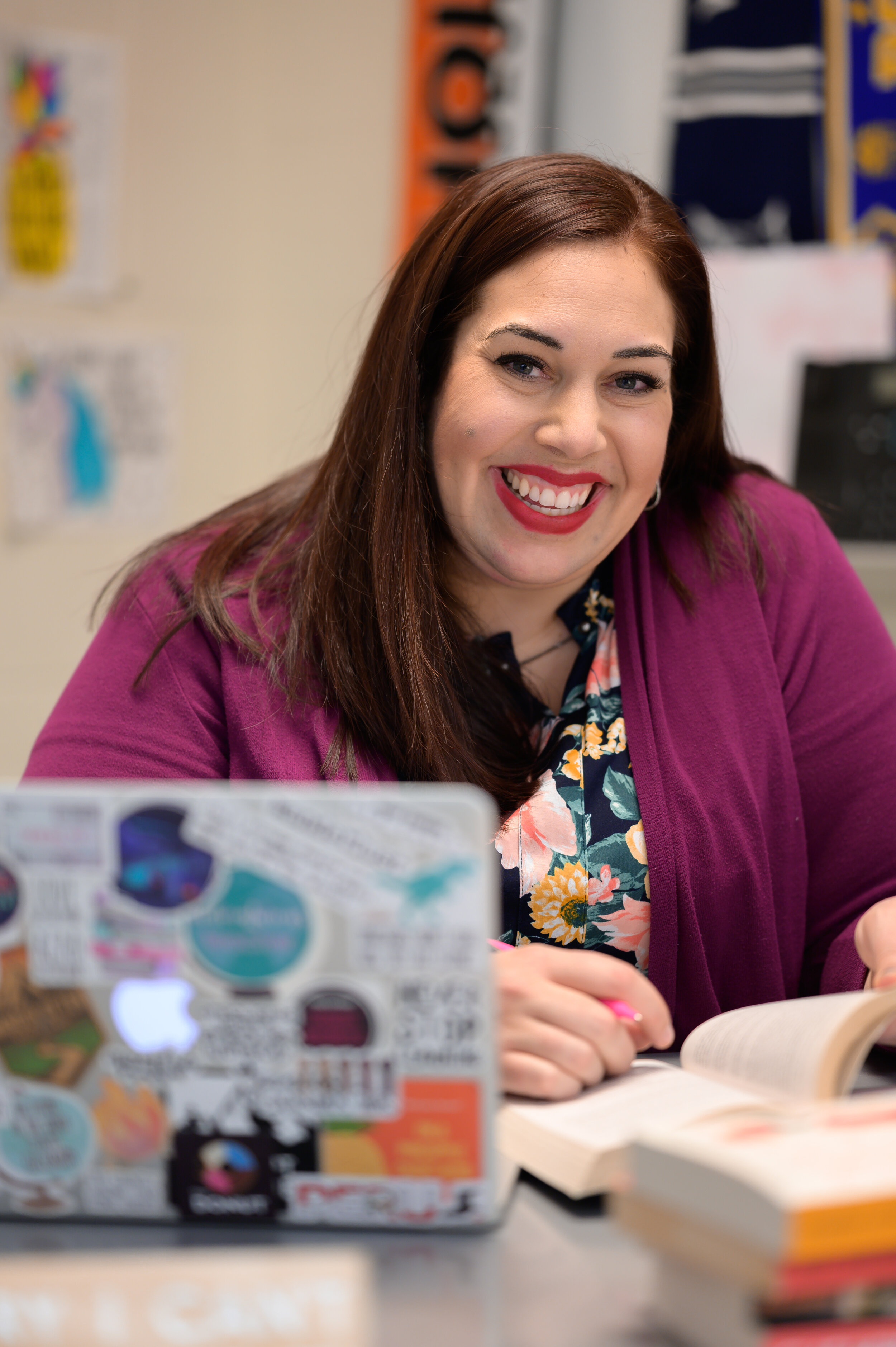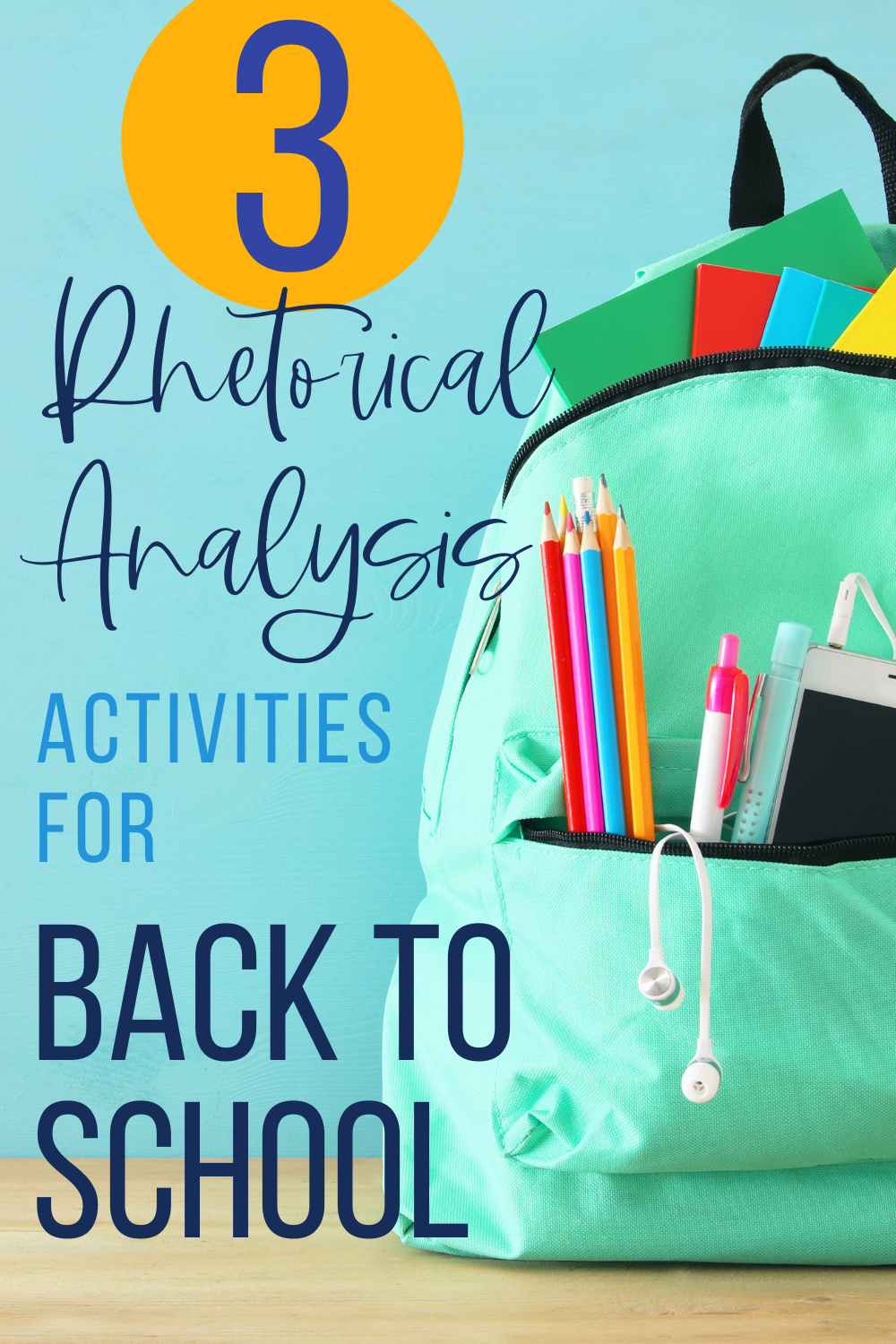Three Rhetorical Analysis Activities for Back to School
During the early weeks of back to school, it’s crucial to not only begin building relationships and getting to know students, but also to begin the process of getting an initial assessment of their skills. As a high school English teacher, one of the yearly skills we address is writing rhetorical analysis. The skills for this kind of writing spiral: from identification of devices, to writing claims, to finding best evidence, and to higher and higher levels of sophistication in their analysis, so no matter which grade I’m teaching in any given school year, I’m looking for activities that can serve multiple purposes: create classroom environment bonding AND provide a peek into the skills of my students.
HOOK THEM WITH JUST ONE GREAT COMMERCIAL
Take a look at this (slightly dated) Staples commercial. It’s titled “The Most Wonderful Time of the Year”. With just this ONE commercial, we can do at least three fun, insightful rhetorical analysis activities
THREE ACTIVITIES TO CONSIDER:
Review ethos, pathos, and logos.
Here’s our entry-level: can they spot the appeals? Which is more dominant than the others? Why? A very simple conversation in small groups moving to whole-class discussion and ending with some written reflection could give you a very quick read on where students are. This could all be facilitated through Nearpod, PearDeck, or even some old-school paper and pencil.
Introduce the concept of “Rhetorical Situation”
Let’s say that it’s pretty clear that students have an introductory knowledge of the rhetorical triangle and the elements. This commercial provides a great entry point into teaching the rhetorical situation. If this is new to you as well, the rhetorical situation essentially refers to the conditions around the argument that make it especially relevant and powerful (I have shared a full lesson walk through using “Be Our Guest” with Beauty and the Beast if that would be a helpful starting point for you!) In this commercial, we could talk about:
S: Speaker (parents)
P: Purpose (to promote sale, purchasing supplies)
A: Audience (parents of school-aged children)
C: Context (back to school season, after long summer home with kids)
E: Exigence (the sale only lasts a certain amount of time)
Looking at the rhetorical situation here offers you the opportunity to explore ethos, pathos, and logos in a totally new way. Now knowing the rhetorical situation, students can think about, so why is this commercial funny? The incongruity of the music (a rhetorical tool), the references to the Christmas holiday (another rhetorical tool) juxtaposed against the context of back to school is what creates humor.
For more practice with the rhetorical situation, try this fun RAFT activity!
Teaching students about the rhetorical situation is an easy way to help bring their analysis skills to the next level. This fun activity helps students look at the exact same argument but through a variety of different “situations”. Take a closer look here!
Rhetorical reader response
Once you’ve gained a peek into your students’ comfort level with rhetorical analysis, it might be fun to engage them in some rhetorical reader response. What’s that? Rhetorical reader response is when students take the concept of the argument (in this case, commercial) and apply it to another situation and message. So, how could students recreate this argument using the idea of “The Most Wonderful Time of the Year” to serve another purpose? Since this ad has parents poking fun and teasing their kids, maybe your students could turn this upside down and create their own version of the argument with their most wonderful time of the year: a time when the kids get what they want out of their parents. Just asking students to shift one component from the situation, they can create some pretty intelligent and creative arguments.
Try This:
Have students create a graphic (or several) using Canva.
Have them add music
Download their work as an MP4 and it will create a short video
No matter which activity best fits your students, I hope that this commercial will fill your room with some laughter and good back-to-school vibes.
SPOTLIGHT RESOURCE:
If you need some other ideas for getting to know students before diving into skill-building, here’s a bunch of fun and creative ways for your students to start conversations with one another.
ABOUT THE AUTHOR
Amanda is the author of Mud and Ink Teaching and a collaborative blogger on Teachwriting.org.
A high school English teacher of every level from ESL to AP Language, Amanda has made it her life’s work to encourage students and teachers to join her on an adventurous teaching and learning journey. Amanda is a full-time teacher author after spending thirteen years in the classroom. She writes curriculum for the high school level, coaches teachers 1:1, and travels with her family whenever possible. Amanda’s obsessed with poetry, argumentation, and showing students the power of taking chances in their writing. She is also the co-host of the podcast Brave New Teaching.
Visit Amanda on Instagram, Facebook, or Twitter for English teacher inspiration and powerful community.





